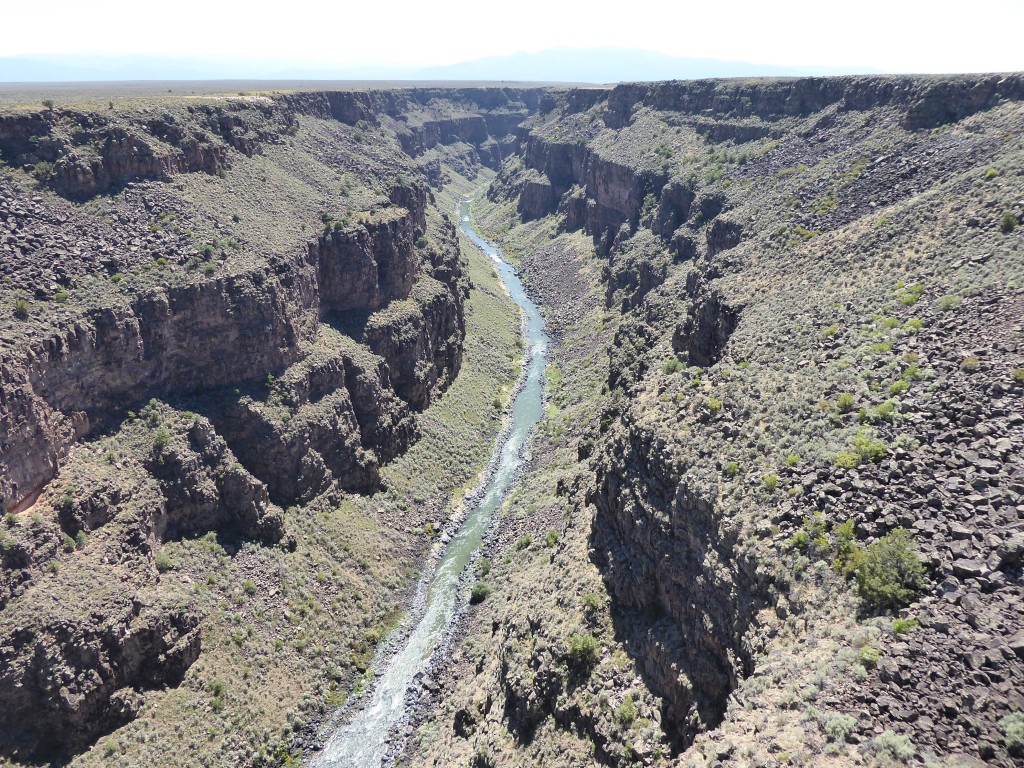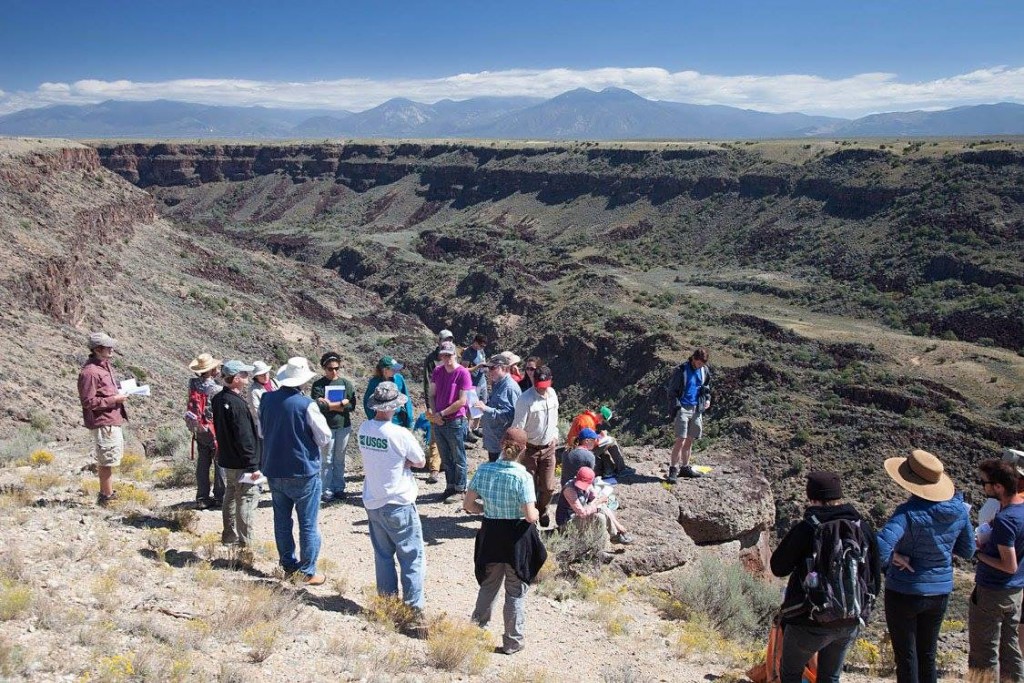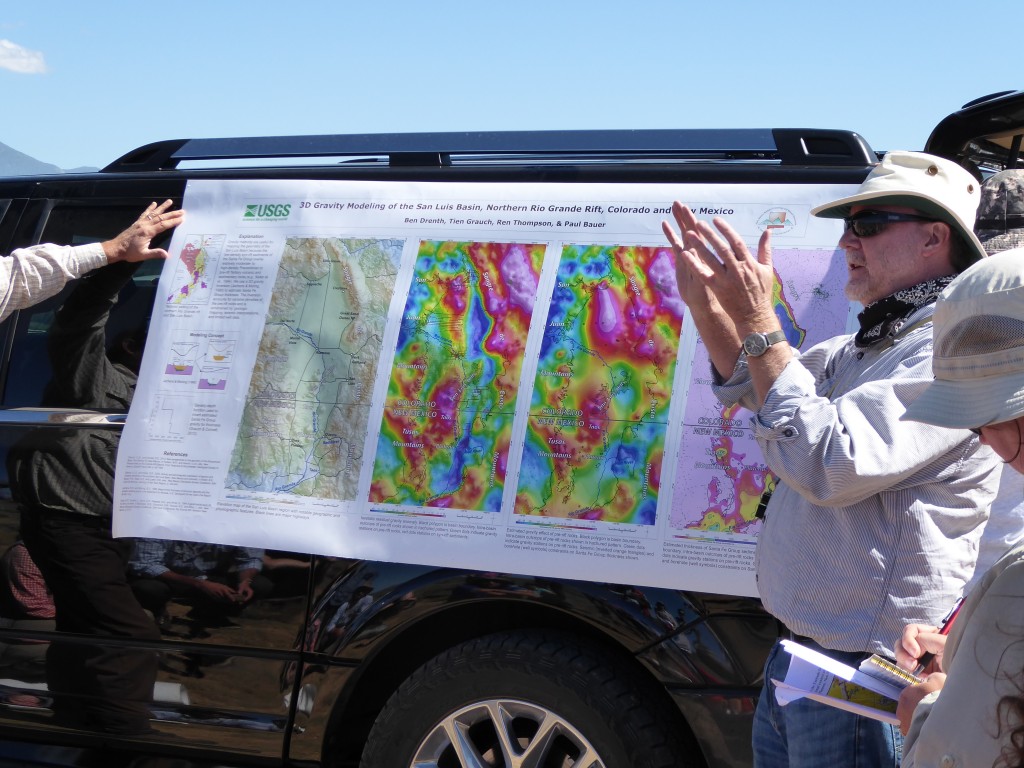Today’s mission:
Examin[e] diverse structural, sedimentary, and volcanic manifestations of the early Miocene to late Pleistocene evolution of the San Luis Basin. The Rio Grande gorge, which is deeply incised into lavas of the Taos Plateau volcanic field and intercalated sediments of the Santa Fe Group, provides a window into the late Miocene to Pleistocene portion of this history. One aspect of the gorge’s history that has recently come to light is the integration of the lower and upper Rio Grande drainages during rapid incision related to late Pleistocene flooding from Lake Alamosa.

Ren Thompson (USGS) provides a masterful overview of the Taos Plateau volcanic and structural history.

The Rio Grande carved into hundreds of meters of Servilleta Basalts, which were deposited 3-5 Ma. The Rio is the lifeblood of New Mexico, before flowing through Texas, and eventually trickling into the Gulf of Mexico

UO group getting introduced to the Rio Grande Gorge and toreva slump blocks. Photo by Prof. Marli Miller

Ren Thompson (USGS) showcases the 3D gravimetric investigation of the San Luis Basin, which reveals surprises about subsurface structures and just how much (or how little!) the Rio Grande Rift has subsided
Mission success!

